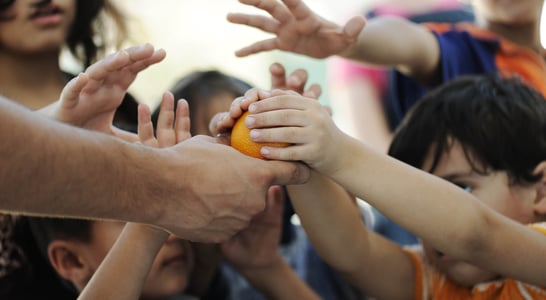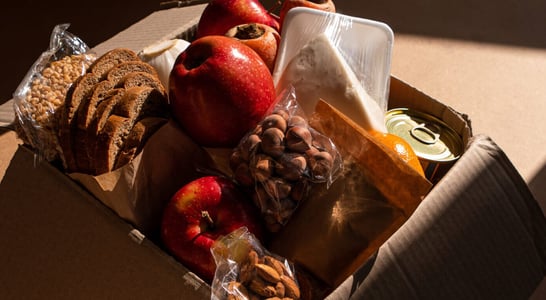
National Food Bank Day
With tens of millions of Americans living in food-insecure households and many more all over the globe, food banks have become a critical part of making sure families and individuals have access to the food resources they need every day.
National Food Bank Day is here to celebrate this service and act as a reminder for communities to show support for food banks and food pantries, on this day and throughout the year!
How to Celebrate National Food Bank Day
Get started celebrating National Food Bank Day by promoting the event with some of these activities:
Support a Food Bank
Whether local or part of a national network, there are more than 350 different food banks located in the United States that act as resources for the thousands of food pantries in cities all across the country.
National Food Bank Day is a great time to get creative about ways to show support to these essential organizations, whether through volunteering, making a financial donation, raising funds through a business or community event, or other ways.
Learn and Share Statistics About Food Banks
An important way to celebrate National Food Bank Day is to get informed about some of the details of what food banks do and how necessary they are to so many individuals and families across the nation and the globe.
Learn about and consider sharing some of these facts about food banks to raise awareness in honor of this important event:
- Each year, more than 50 million people in need receive help from food banks across the United States
- Out of those people, 12 million children and 7 million seniors rely on food pantries and meal programs to survive
- The USDA’s Food and Nutrition Service provides food banks with almost 2 billion pounds of food each year
- Instead of distributing food to individuals, food banks pass them out through various charities, including local food pantries
History of National Food Bank Day
The background of National Food Bank Day can be traced back to 1967 when the world’s first food bank, St. Mary’s Food Bank Alliance, was established through the efforts of John van Hengel.
Dissatisfied with the limited efficiency of soup kitchens, while recognizing the amount of consumable food that was thrown into dumpsters behind grocery stores, van Hengel came up with the idea of reducing the food.
This concept worked to reduce two problems: food waste and hunger.
Since that time, the idea for food banks has grown far and wide, with the first European food bank being founded in 1984 and then moving into South America, Asia, and Africa in the 1990s and early 2000s.
By 2007, the Global FoodBanking Network was formed, with members across all six habitable continents and more than 50 countries.
National Food Bank Day was founded in 2017 by St. Mary’s Food Bank Alliance, in celebration of the organization’s 50th anniversary.
The event takes place in early September, strategically timed to raise awareness and boost the stores of food banks before the winter months when food scarcity is often higher.
National Food Bank Day FAQs
What is the origin of National Food Bank Day?
National Food Bank Day is observed annually on the first Friday in September.
It was established to raise awareness about food insecurity and to encourage support for food banks nationwide.
The day highlights the crucial role these organizations play in combating hunger and invites communities to contribute through donations and volunteering.
How do food banks contribute to environmental sustainability?
By rescuing surplus food that would otherwise go to waste, food banks play a significant role in reducing food waste.
This practice not only feeds those in need but also minimizes the environmental impact associated with food production and disposal.
What are some innovative ways communities support food banks?
Communities have developed creative initiatives to support food banks, such as hosting “canstruction” events where teams build structures using canned goods, which are later donated.
Additionally, some areas organize food drives in partnership with local events, encouraging attendees to bring non-perishable items for donation.
How do food banks address dietary restrictions and cultural preferences?
Many food banks strive to accommodate diverse dietary needs by offering gluten-free, halal, kosher, and vegetarian options.
They often collaborate with community organizations to ensure they can provide culturally appropriate foods to those they serve.
Are there any misconceptions about food bank usage?
A common misconception is that only unemployed individuals rely on food banks.
In reality, many working families turn to food banks due to insufficient wages or unexpected expenses, highlighting the widespread nature of food insecurity.
How has technology enhanced food bank operations?
Modern food banks utilize technology to improve efficiency, such as implementing inventory management systems, coordinating online donations, and using apps to connect with volunteers and donors.
These advancements help streamline operations and better serve their communities.
What role do food banks play during emergencies and natural disasters?
During crises, food banks act as vital resources, providing immediate food assistance to affected individuals. They often collaborate with disaster relief organizations to distribute essential supplies and support recovery efforts.
How do food banks support long-term food security?
Beyond immediate food assistance, many food banks offer programs like nutrition education, cooking classes, and assistance with benefit applications.
These initiatives aim to empower individuals and promote sustainable food security.
What is the significance of volunteer involvement in food banks?
Volunteers are the backbone of many food banks, assisting with tasks such as sorting donations, packing food boxes, and distributing meals.
Their contributions are essential to the daily operations and overall success of these organizations.
How can individuals support food banks beyond donating food?
Individuals can support food banks by volunteering their time, organizing community food drives, advocating for hunger-related policies, and providing monetary donations, which allow food banks to purchase necessary items and fund essential programs.
See what else is happening…
There’s always more going on every month at Days Of The Year. Here are our favorites this month!
Also on ...
View all holidaysNational Cheese Pizza Day
When it comes to satisfying your pizza cravings, nothing hits the spot quite like a warm, gooey slice of cheesy goodness.
National Lazy Mom’s Day
Parenting is a demanding job, but it's okay to take a break. Resting and practicing self-care can recharge and make you a better parent.
International Day of Charity
Any charitable donation, big or small, money or time, can go a long way to helping solve some of the world’s worst problems, such as child hunger or the environment.
National Chianti Day
Savoring this rich, velvety red with deep flavors and aromatic complexity enhances any meal or celebration beautifully.
We think you may also like...
National Donut Day
Stop by Krispy Kreme, Dunkin’, wherever you get your donuts and grab a selection for friends, family, coworkers, and of course, yourself.








